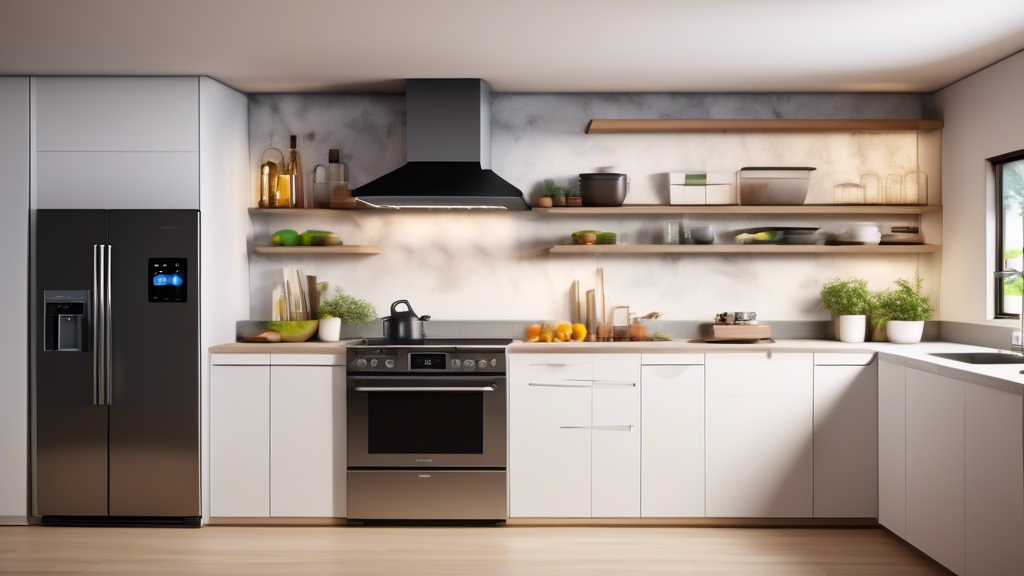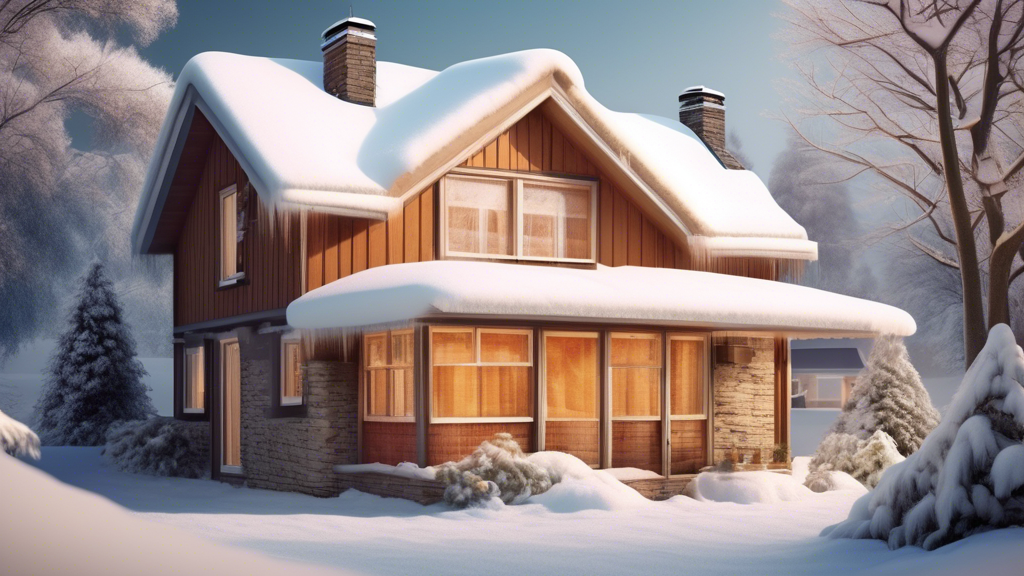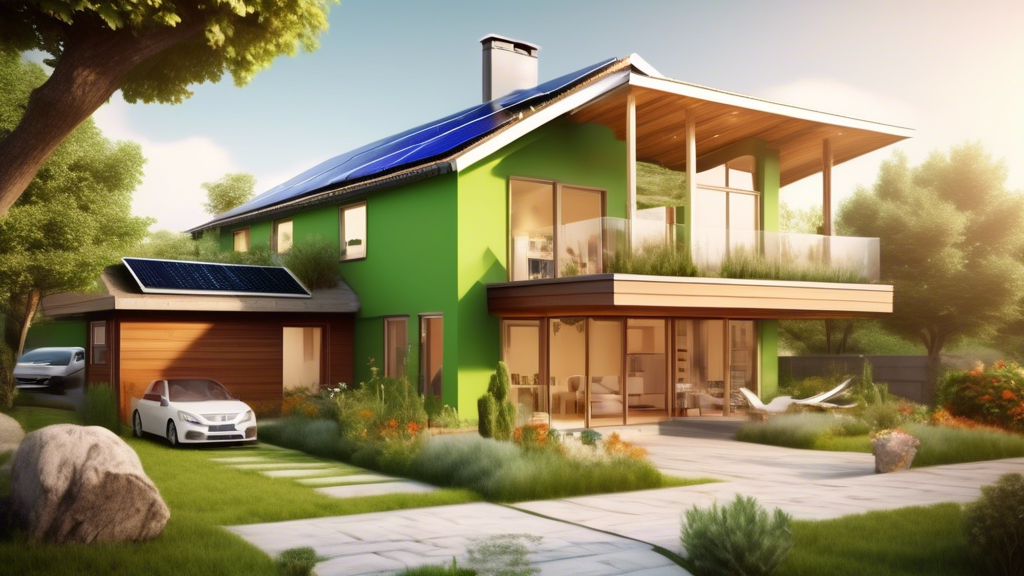In an age where every watt counts—both for our wallets and the planet—discovering the top energy-saving tips for a greener home is not just a noble pursuit, but also a smart financial move. Picture this: lower utility bills, a smaller carbon footprint, and the satisfaction of knowing you’re doing your bit to fight climate change. Sounds dreamy, right? Well, buckle up, because this article is your gateway to making that dream a reality.
From swapping out old, power-hungry appliances for sleek, energy-efficient models to sealing up those sneaky drafts that send your heating bill through the roof, we’re diving deep into practical, impactful strategies that will transform your living space into an eco-friendly haven. And the best part? Many of these changes are easier—and cheaper—than you might think.
We’ll start by exploring the fascinating world of energy-efficient appliances and smart technology. Imagine a refrigerator that keeps your veggies crisp without devouring electricity, or a thermostat that learns your routine and ensures you’re always comfortable without wasting energy. We’ll show you how to pick the best ENERGY STAR-rated products to maximize your savings, both environmental and financial.
Next, we roll up our sleeves and tackle home insulation and weatherization, the unsung heroes of energy conservation. We’ll guide you through the steps to properly insulate your attic, walls, and floors, and spill the secrets of sealing windows, doors, and other drafty suspects. Because, let’s be honest, who wouldn’t want to enjoy a toasty winter without feeling like they’ve been robbed by their heating bill?
And it doesn’t stop there. We’ll delve into optimizing your heating and cooling systems for peak performance. We’ll discuss the surprisingly simple yet effective strategies for maintaining and upgrading HVAC systems, share the magic of programmable and smart thermostats, and divulge the best thermostat settings for each season. With a bit of routine maintenance and smart adjustments, you’ll be living in comfort all year round, without the eco-guilt.
This is your complete guide to transforming your home into an energy-saving champion. Get ready to embrace a greener, more efficient lifestyle—one tip at a time.
Introduction to Energy-Saving Tips for a Greener Home
Let’s face it, who doesn’t love saving money while also helping the planet? Pour yourself a cup of herbal tea and get comfy, because we’re diving into the world of energy conservation. Adopting energy-saving practices isn’t just a way to save a few bucks on your utility bill; it’s a powerful step towards a more sustainable and eco-friendly lifestyle.
Energy conservation is more important than ever. Think of it as the superhero cape that we all can wear. By reducing our energy consumption, we’re taking pressure off our power grids, reducing greenhouse gas emissions, and conserving precious natural resources for future generations.
Moreover, the financial perks can’t be overstated. Imagine fewer sleepless nights worrying about sky-high energy bills. Not to mention, energy-efficient homes are often cozier, with fewer drafts and more consistent temperatures. Win-win, right?
This article lays out some top energy-saving tips to help you transform your home into an eco-friendly haven. From the latest smart technology and energy-efficient appliances to the nitty-gritty of insulation and HVAC system optimization, we’ve got you covered. Whether you’re a seasoned eco-warrior or just starting on your green journey, these tips will make a notable difference in both your environmental footprint and your wallet.

Energy-Efficient Appliances: Invest in Smart Technology
If your kitchen could talk, it would probably thank you for swapping out that ancient refrigerator that guzzles electricity like it’s in a frat house. Enter the sleek, cutting-edge world of energy-efficient appliances—your wallet and the planet’s ozone layer will rejoice together!
Benefits of Using Energy-Efficient Appliances
Why bother updating your appliances, you ask? Well, here’s the tea: energy-efficient appliances are engineered to perform the same tasks using less energy. Your utility bills shrink while your eco-consciousness expands. Not to mention, these appliances often come with bells and whistles that make your life easier. Imagine your dishwasher greeting you with a wink and a whisper, “I’ll handle those dirty dishes, darling, and save you some cash while I’m at it.”
Recommended Energy-Saving Appliances and Smart Home Devices
Let’s dive into the crème de la crème of energy-saving appliances:
- Refrigerators: Modern ENERGY STAR-rated fridges use up to 40% less energy than models sold a decade ago. Brands like LG and Samsung offer smart fridges that even keep track of your grocery lists. Hello, future!
- Washing Machines: Front-load washers are the cool kids on the block with features like water-saving rinse cycles. Trust brands like Bosch or Electrolux for a spin-tastic experience that won’t spin your meter out of control.
- Dishwashers: ENERGY STAR-certified dishwashers by Miele or KitchenAid clean impeccably while sipping on significantly less water and power.
- Smart Thermostats: The likes of Nest and Ecobee adjust your home’s climate to perfectly match your comfort levels and seasonal changes, all while learning your habits to maximize energy savings. These devices practically have a PhD in thermostatology.
Tips for Selecting ENERGY STAR-Rated Products
Wondering how to pinpoint the best ENERGY STAR-rated products? Here’s a quick guide that’ll have you shopping like an eco-savvy pro:
1. Look for the Label
That bold blue label isn’t just a cute design; it’s your assurance that the product meets strict energy efficiency guidelines set by the EPA. Think of it as the VIP badge of the appliance world.
2. Check the Details
ENERGY STAR products come with EnergyGuide labels which detail energy consumption, estimated yearly operating costs, and comparisons to similar models. Don’t just skim it like a Terms and Conditions page—give it a proper read.
3. Do the Math
Calculators aren’t just for high school algebra. Use online energy saving calculators to figure out potential savings. For instance, replacing a 20-year-old fridge with a new ENERGY STAR model can save you over $200 every year. That’s a lot of avocado toast!
4. Consider the Rebate
Before you start swiping that credit card, check for rebates and incentives available in your area. Many utility companies and local governments offer rebates to encourage energy-efficient purchases. It’s like finding hidden treasure at the end of your eco-friendly rainbow.
5. Think Long-Term
While energy-efficient appliances might have a higher upfront cost, they pay for themselves over time. Plus, you’ll bask in the glow of knowing you’re making a smart, sustainable choice. It’s kind of like investing in a relationship that’s built to last—finance and eco-love in harmony.
In summary, diving into the world of energy-efficient appliances isn’t just a fleeting affair—it’s a lifestyle choice that rewards you with lower energy bills, higher functionality, and a greener footprint. So, the next time you stare down that old, energy-hogging refrigerator, be bold. Upgrade, save energy, and smile at the sustainable future unfolding in front of you. Happy haggling, my eco-conscious friends!

Home Insulation and Weatherization: Key Steps to Reduce Energy Waste
When it comes to making your home an energy-efficient haven, insulation and weatherization are your best mates in the fight against energy waste. A properly insulated and sealed home isn’t just cozy and snug; it’s also a fortress against skyrocketing energy bills. Let’s dive into how you can turn your humble abode into an efficient, eco-friendly sanctuary.
The Importance of Proper Insulation and Weatherization
Imagine cuddling up in a blanket on a chilly winter evening. Feels like bliss, right? Good insulation does the same for your home, keeping the warmth in during the winter and the heat out during the summer. Proper insulation drastically reduces the need for excessive heating and cooling, which in turn slashes your energy consumption and those pesky utility bills. Weatherization, on the other hand, is like adding an extra layer of armor to your home, sealing all those sneaky leaks where the conditioned air loves to escape.
Detailed Steps to Improve Home Insulation
Attic Insulation
Your attic is like the lid on your energy-efficiency jar. If it’s not sealed tight, all that precious warm air is slipping right out the top. Start by checking your attic’s insulation level. The U.S. Department of Energy recommends having at least R-38 insulation for most areas. Rolled insulation or blown-in cellulose are fantastic options to beef up your attic’s defenses against energy loss. Remember, wearing a mask and protective clothing is a smart move when dealing with insulation materials.
Wall Insulation
Walls: they hold up your roof and can make a massive difference in your home’s energy dynamics. If you live in an older home, chances are your walls could use a bit of an upgrade. Consider injecting foam insulation or blowing in cellulose between the wall studs. It’s a bit like giving your home a warm hug and trust me, it will pay off with lower energy bills and a more comfortable interior.
Floor Insulation
Let’s not forget where you’re standing! If you have uninsulated floors above basements, crawlspaces, or garages, you might feel like you’re walking on ice during winter. Installing rigid foam boards or fibreglass batts between the floor joists can make a world of difference. It keeps the chilly drafts at bay and makes for toasty toes all winter long.
Tips on Sealing Windows, Doors, and Other Potential Air Leaks
Windows
Windows are infamous for letting your warm or cool air escape like prisoners from Alcatraz. Start by checking for drafts on a windy day; you’ll easily spot the culprits. Caulking and weather stripping are your go-to solutions. Apply weatherstripping around the window sash and frame, and use caulk to seal gaps where the window meets the wall. For a bit of extra pizazz, consider adding storm windows or thermal curtains.
Doors
Doors are another usual suspect when it comes to energy loss. Felt a draft under your door? Time to kick air leaks to the curb! Use door sweeps on the bottom and weatherstripping around the frame. For any gaps you can see right through, foam tape or specialized door seal kits will come to your rescue. It’s the small details that help your home stay snug and efficient.
Other Culprits
Believe it or not, electrical outlets and switch plates can also be guilty of sneaky air leaks. Installing foam gaskets behind outlet and switch covers is a quick and inexpensive fix. Don’t overlook chimney flues and attic hatches either; insulated doors or flue sealers can plug these hidden leaks.
By following these practical energy-saving tips, your home’s insulation and weatherization efforts will create a barrier against the elements and energy loss, transforming your house into a veritable fortress of efficiency. It’s a win-win for both your wallet and the environment.

Optimize Heating and Cooling Systems for Maximum Efficiency
Strategies for Maintaining and Upgrading HVAC Systems
Let’s face it, your heating, ventilation, and air conditioning (HVAC) system is the lifeblood of your home’s comfort. But did you know that it can also be a major energy vampire if not optimized properly? Well, grab your garlic and a wooden stake, because we’re about to wrangle that energy-sucking beast!
First things first, make sure your HVAC system is the right size for your home. An oversized system will short-cycle, while an undersized system will struggle to keep up, both of which waste energy. A professional assessment can help you determine if your system is a good fit.
Next on the agenda is regular maintenance. Just as you wouldn’t drive your car forever without an oil change (at least, I hope not!), don’t neglect your HVAC. Change or clean filters every 1-3 months, and get a professional tune-up annually. Trust me, your wallet and your home’s air quality will thank you.
Recommended Thermostat Settings for Different Seasons
Now, about those thermostat settings. In winter, keep your thermostat at 68°F when you’re home and lower it while you’re asleep or away. For summer, aim for 78°F when you’re home. Adjusting your thermostat by just 7°-10° for 8 hours a day can save you up to 10% a year on heating and cooling.
And if you’re hosting your legendary summer barbecue? Give your AC a break and let those summer breezes in. Fire up your grill and enjoy a meal al fresco while your home’s cooling system does a happy dance.
Benefits of Using Programmable and Smart Thermostats
Speaking of thermostats, if you’re still using that beige plastic dial from the 80s, it’s time for an upgrade. Programmable and smart thermostats are game-changers in the quest for energy-saving homes. Why? Because they learn your schedule and adjust the temperature accordingly, maximizing efficiency without sacrificing comfort.
Imagine cozying up on your couch, binge-watching your favorite series, without having to get up to adjust the thermostat. Or better yet, managing your home temperature from your smartphone while lounging on a tropical beach (hey, dare to dream)!
Devices like the Google Nest, Ecobee, or Honeywell can even provide energy usage reports, helping you identify patterns and make smarter choices. Investing in one of these gadgets is like having a mini climate scientist in your home, ensuring optimal comfort and efficiency around the clock.
Tips for Routine Maintenance and Checks
Let’s wrap this up with some easy peasy maintenance tips that will keep your HVAC system in tip-top shape and save you some hard-earned cash on energy bills.
- Duct Check: Inspect your ductwork for leaks or blockages. Sealing leaky ducts can improve the efficiency of your HVAC system by as much as 20%.
- Clear Surroundings: Keep the area around your outdoor unit free from debris, plants, and anything else that could obstruct airflow.
- Seal Leaks: Seal your home’s envelope – those are the spots where the inside and outside air exchange without an invite. Common culprits include windows, doors, attic hatches, and even electrical outlets.
- Thermostat Placement: Ensure your thermostat is away from heat sources like lamps, electronics, or direct sunlight. Misplaced thermostats can give false readings and lead to inefficient heating/cooling cycles.
- Schedule Check-Ups: Establish a regular maintenance schedule with a trusted HVAC professional. They can catch small issues before they turn into expensive repairs.
By committing to regular maintenance, understanding optimal thermostat settings, and leveraging the latest technology, you can banish those energy vampires and create a greener, more efficient haven. Your home, your wallet, and Mother Earth will all give you a standing ovation.
As we wrap up this delightful journey through the realm of energy-saving tips, it’s clear that a greener home not only nurtures Mother Earth but also sweetens your wallet with some much-needed financial savings. The essence of this green revolution lies in the wise choices we make, from the very appliances we purchase to the cozy insulation in our walls.
Investing in energy-efficient appliances is like inviting a team of little energy-saving elves into your home. With smart technology, these devices whisper sweet nothings to the grid, conserving power and boosting efficiency. Remember, aiming for those ENERGY STAR-rated products ensures you’re selecting the crème de la crème of the energy-efficient world. Your fridge, dishwasher, and even your coffee maker will become your unsung heroes, battling waste one kilowatt at a time.
Don’t forget the unsung insulation heroes who keep your home’s intimate warmth from escaping into the wild winter night. Proper insulation and weatherization are the sturdy shields guarding your home against energy loss. A well-insulated attic, walls, and floors can make your castle feel cozy, while drafts from leaky windows and doors become a thing of the past. Seal those pesky air leaks! Your toes will thank you.
And speaking of coziness, your HVAC system deserves a standing ovation. These systems are the beating heart of your home’s climate. Regular maintenance and strategic upgrades can turn them from mere workhorses into thoroughbreds of efficiency. Setting your thermostat wisely for the seasons and employing the magic of programmable and smart thermostats can transform your heating and cooling cycles into a symphony of comfortable precision. Routine checks and a dusting off of the ol’ filters can keep these systems humming along smoothly, bringing balance and harmony to your home environment.
Ultimately, the quest for energy-saving isn’t just about pinching pennies or ticking off environmental checklists. It’s about creating a harmonious living space where efficiency meets comfort and sustainability embraces convenience. So, take pride in those energy bills shrinking like wool sweaters in a hot wash, and bask in the eco-friendly glow of a greener home. Trust me, even your plants will applaud.
